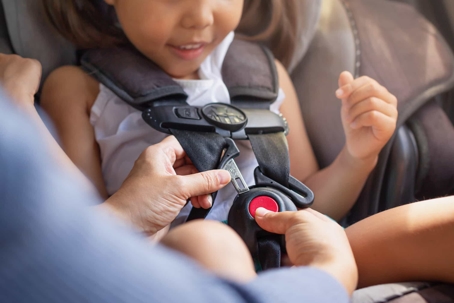As a parent, your primary concern is the safety of your children. This is particularly true when it comes to traveling by car, where the risk of accidents is an ever-present reality. In this blog post, we'll discuss essential steps you can take to ensure your child's safety on the road, from selecting the right car seat to understanding the legal requirements for child passenger safety.
The Importance of Proper Car Seats
One of the most crucial factors in child passenger safety is the correct use of car seats. These devices are designed to protect young passengers from the force of an impact, and their effectiveness is well-documented. According to the National Highway Traffic Safety Administration (NHTSA), car seats reduce the risk of injury in a crash compared to seat belt use alone. The agency also said 40% of children killed in car accidents in 2021 did not have any restraints.
However, it's not enough just to have a car seat - it must be the right one for your child's age, weight, and height. Infants and toddlers should typically use rear-facing car seats, while older children may transition to forward-facing seats and booster seats as they grow. Each stage offers different levels of protection appropriate to the child's development.
Installation and Use: It's All in the Details
Once you've selected the right car seat, it's vital to install it correctly. An improperly installed car seat can compromise its ability to protect your child in a crash. Fortunately, many resources are available to assist parents with this task, including online tutorials, manuals, and even local car seat inspection stations.
Equally important is ensuring that your child is buckled in correctly every time they ride in the car. The harness should be snug and lie flat without any twists. The chest clip should be at armpit level to keep the harness in the right position. As tedious as it may seem to check these details every trip, it's a small price to pay for your child's safety.
Legal Requirements for Child Car Seats
Beyond the practical considerations, there are also legal requirements for child car seats that vary by state. Generally, these laws specify the age, weight, and height at which a child must use a car seat or booster and when they can start using the vehicle's seat belt system. Violations of these laws can result in fines, points on your license, and even increased liability in the event of an accident.
The Role of Car Seats in Accident Prevention
While car seats can't prevent accidents from happening, they play a crucial role in minimizing injuries when they do occur. A correctly used car seat can mean the difference between a minor injury and a life-threatening one. Therefore, investing time and effort to ensure your child's car seat is appropriately selected, installed, and used is one of the best ways to protect them on the road.
In conclusion, child passenger safety is a multifaceted issue that involves more than just strapping your child into a car seat. It requires careful selection of the right seat for your child, meticulous installation and use, and awareness of the relevant legal requirements. By taking these steps, you can significantly enhance your child's safety and reduce the risk of severe injury in the event of a car accident.
Sacramento Personal Injury Attorneys at Del Rio & Caraway, P.C.
At Del Rio & Caraway, P.C., we understand the devastating impact of car accidents, particularly those involving children. Our Sacramento personal injury lawyers are dedicated to helping families navigate the aftermath of such events and fight for the compensation they deserve. If you have questions or need assistance, contact us online or by phone at (916) 229-6755. Your child's safety is our priority.
Disclaimer: The content within this blog post is intended purely for informational purposes. It encompasses general discussions and information related to health matters and associated topics. Please note that this information, as well as any resources linked in this blog, should not be interpreted as medical advice. It does not replace the need for professional medical consultation or treatment.
